Everything you need to know about the Samsung Galaxy Watch 7
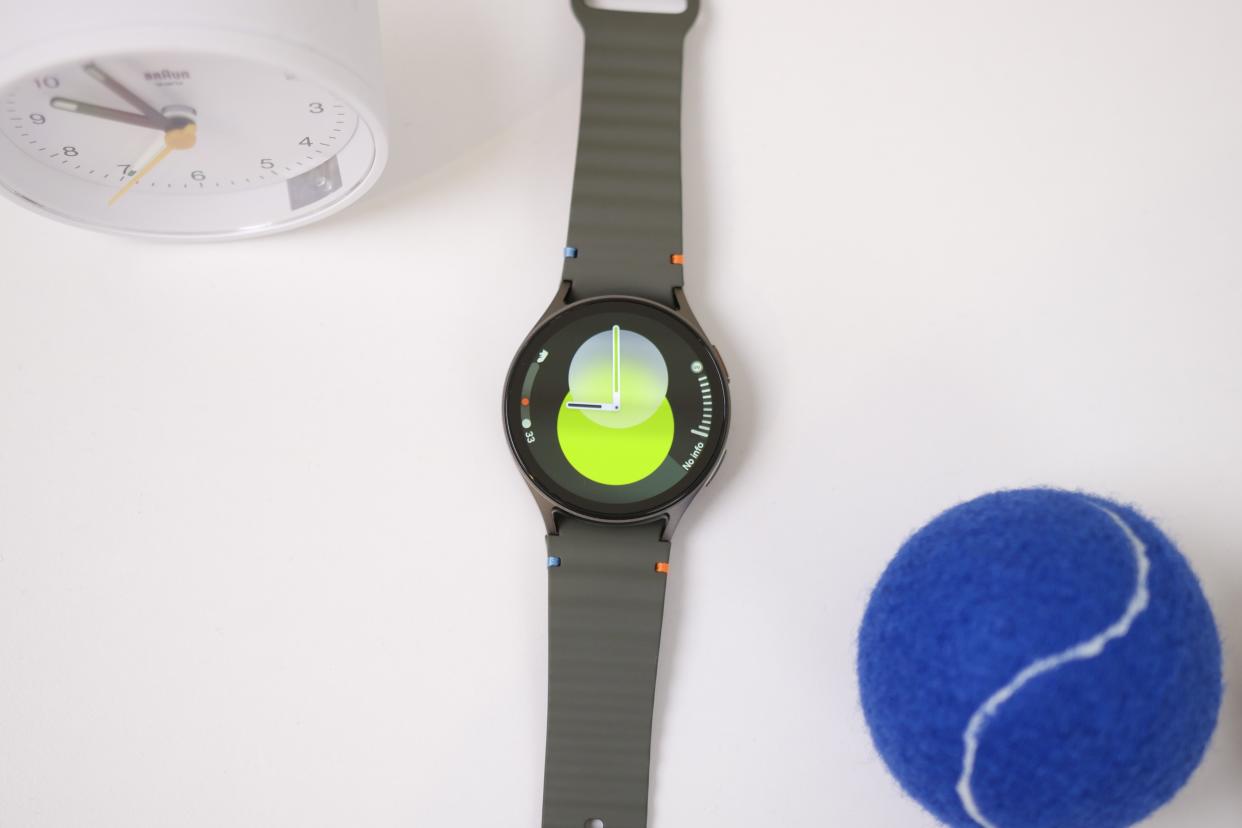
Samsung took the wraps off some exciting new products at its latest Unpacked event on July 10. While most of these are the latest releases in product families that have become well-established by now, that doesn’t mean the 2024 versions don’t pack in some welcome enhancements.
That’s certainly the case with the Samsung Galaxy Watch 7. It may be sticking with Samsung’s iconic design, but it has a lot more to offer under the hood, and if you’ve been on the fence about Samsung’s wearables, this could be a great year to jump in. Here’s everything you need to know about it.
Samsung Galaxy Watch 7: price and availability
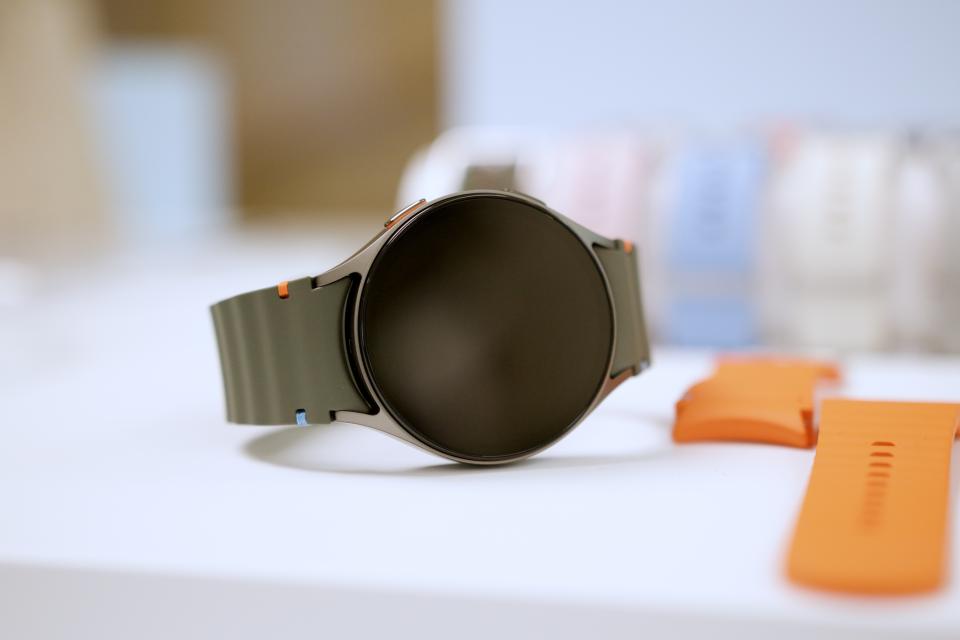
Although Samsung unveiled the Galaxy Watch 7 on July 10, you won’t be able to get your hands on one until July 24. However, you can preorder one from Samsung.com, which should get it into your hands on the same day it shows up in stores. By the end of the month, you should be able to find it at most major retailers, such as Amazon and Best Buy.
The Galaxy Watch 7 is priced the same as its predecessor, starting at $300 for the smaller 40mm version or $330 for the 44mm size. Adding LTE support will bump those prices up by $50 each. Both sizes are available in green, while you’ll have to opt for the 40mm model if you want it incream or the 44mm model to get it in silver. Both sizes will be available with your choice of Sport, Fabric, or Athleisure one-click band styles. Samsung is also offering a free extra watch band for those who preorder the Galaxy Watch.
Samsung Galaxy Watch 7: specs
Display size | 44mm: 37.3 mm 40mm: 33.3 mm |
Body size | 44mm: 44.4 x 44.4 x 9.7 mm 40mm: 40.4 x 40.4 x 9.7 mm |
Weight | 44mm: 33.8 grams 40mm: 28.8 grams |
Resolution in pixels | 44mm: 480 x 480 (453 ppi) 40mm: 432 x 432 (453 ppi) |
Touchscreen | Super AMOLED, always-on display |
Storage | 32GB |
Wireless interface | Bluetooth 5.3, Wi-Fi 802.11 b/g/n, dual-band, NFC, LTE |
Blood oxygen sensor | Yes |
Accelerometer | Yes |
Gyroscope | Yes |
Ambient light sensor | Yes |
Heart rate sensor | Yes |
Barometer | Yes |
GPS | Dual Frequency L1/L5 |
Compass | Yes |
Water/dust resistant | 5ATM + IP68 / MIL-STD-810H |
Battery life | 44mm: 425mAh 40mm: 300mAh |
Price | From $300 |
Samsung Galaxy Watch 7: design and display
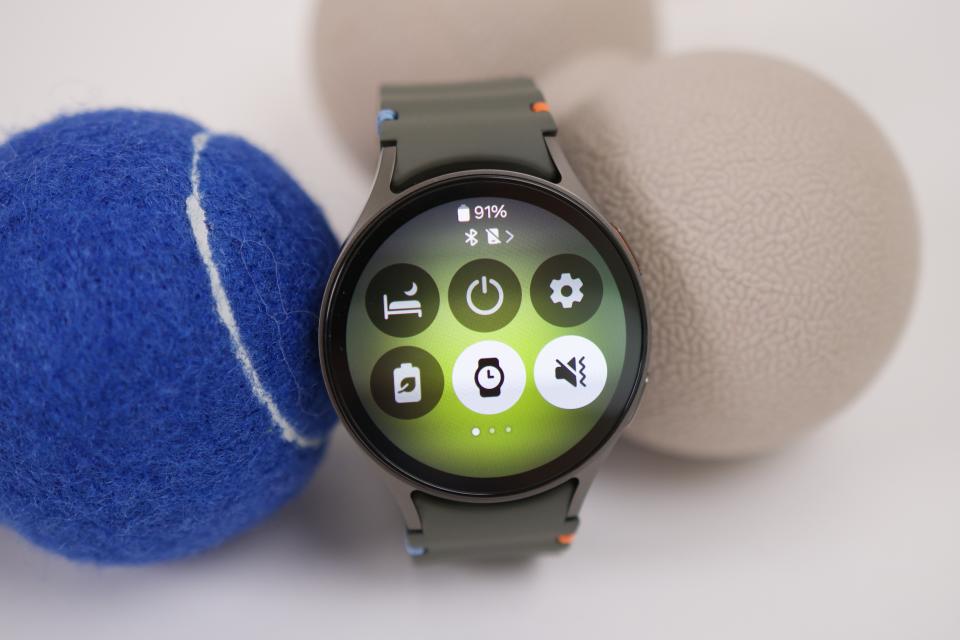
Unlike this year’s new Galaxy Watch Ultra, which surprised us by embracing a square Apple Watch crossover look, the Galaxy Watch 7 sticks with Samsung’s tried-and-true circular design.
In fact, from the outside, you may have a hard time distinguishing the Galaxy Watch 7 from last year’s model. The 40mm and 44mm sizes remain, as does the universal band attachment system, so you’ll be able to use anything from the new “one-click” bands that Samsung introduced with last year’s Galaxy Watch 6 to bands made for older models.
The most noticeable design change this year isn’t in the build of the Galaxy Watch 7, but rather in the colors. Samsung tends to offer only one or two colors for both sizes of its wearables, keeping its most interesting ones exclusive to one or the other. Two years ago, the Galaxy Watch 5 was limited to graphite and silver in both sizes. Then, last year, Samsung moved silver to a 44mm exclusive, leaving graphite as the only common option.
This year, it’s flipping that script by adding green as the base color. That’s the shade to get if you want to make it clear you’re sporting Samsung’s latest smartwatch, but you can still pick up the 44mm version in the silver of prior generations if that’s your preference. This year, the 40mm goes with cream as its exclusive color, switching away from its more traditional gold and pink gold finishes.
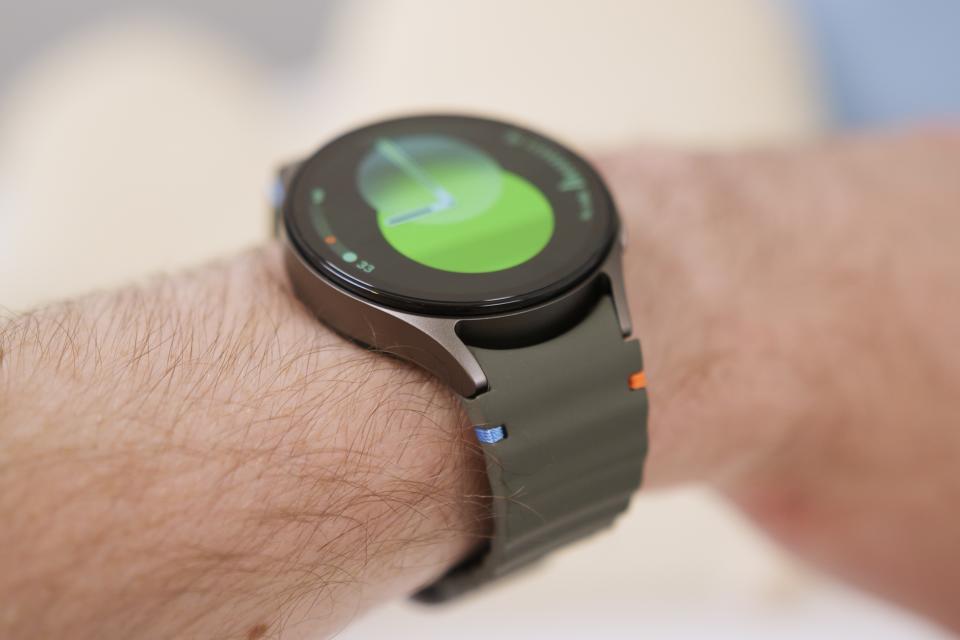
As with the design, the display remains essentially unchanged from last year’s Galaxy Watch 6. That model represented a 20% leap in size and resolution over its predecessor, thanks to a smaller bezel around the outside. Samsung is sticking with those specs on the Galaxy Watch 7, which boasts the same 37.3mm 480 x 480 Super AMOLED always-on display on the 44mm model and 33.3mm 432 x 432 display for the 40mm version. Samsung hasn’t said anything about increased brightness on this year’s displays, but last year’s was already plenty bright at 2,000 nits, so we don’t think there’s any need for improvement here.
Likewise, the Galaxy Watch 7 boasts the same 5ATM + IP68 and MIL-STD-810H ratings as last year’s model, which is the standard for any smartwatch that’s not targeted at outdoor adventure enthusiasts.
Samsung Galaxy Watch 7: health and fitness tracking
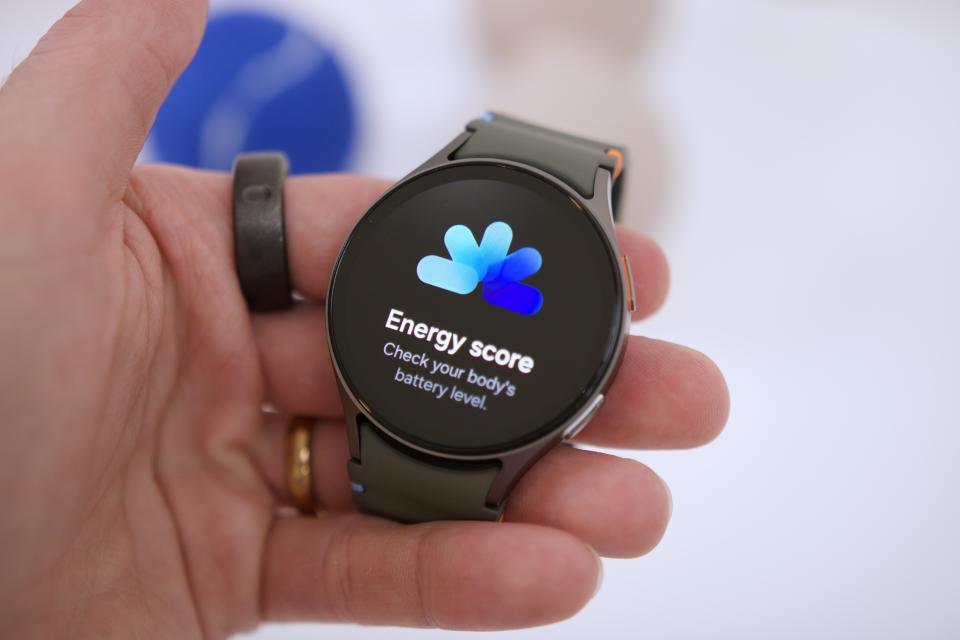
While the Galaxy Watch 7 may not have changed much on the outside, Samsung has added some nice upgrades that take the wearable’s health and fitness features to a new level.
There’s an enhanced BioActive Sensor that promises increased accuracy and adds a new metric for tracking advanced glycation end products (AGEs), providing an AGEs Index that offers insight into your biological age and metabolic health. There’s also a new Energy Score metric, which analyzes various types of health data to give you a 1 to 100 score rating your body’s energy for the day ahead.
Sleep analysis is also getting more sophisticated, with an advanced AI algorithm and the Food and Drug Administration (FDA)-authorized Sleep Apnea feature that could help explain why you never feel like you’re getting a good night’s rest. That’s joined by the usual heart rate monitoring features that help detect signs of atrial fibrillation and let you perform simple electrocardiograms (ECGs) to see how your heart is doing.
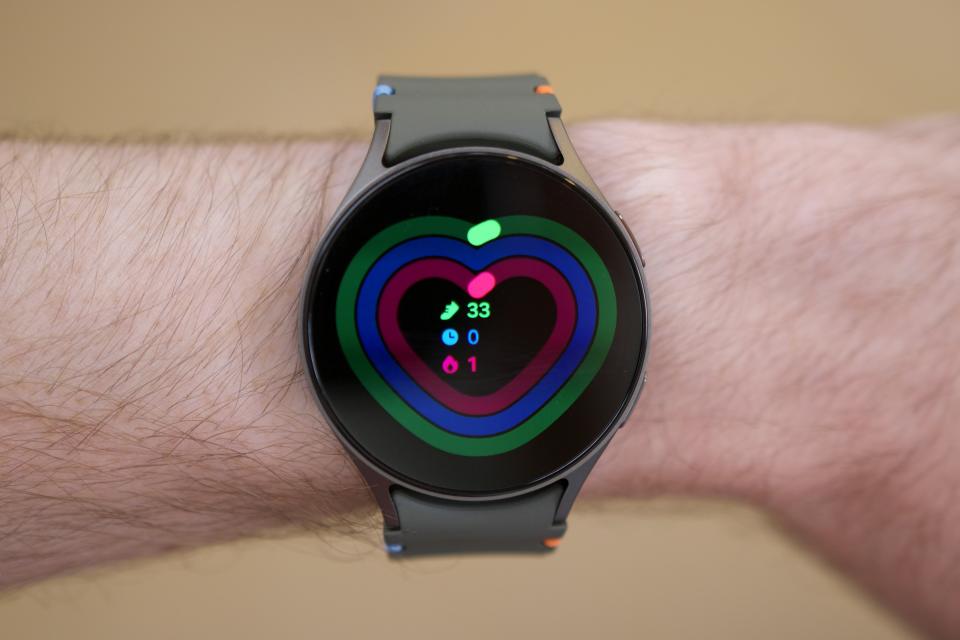
Samsung’s personalized workout tracking gains a new Race feature on the Galaxy Watch 7 that lets you compare your outdoor running and cycling workouts with real-time metrics that show your progress compared to the last time you ran or biked along the same route.
These new features build on the excellent health and fitness capabilities of the Galaxy Watch 6, so you’re still getting the temperature sensor, Advanced Sleep Coaching, Personalized Heart Rate zones, cycle tracking, blood oxygen tracking, and more.
Samsung Galaxy Watch 7: performance and battery
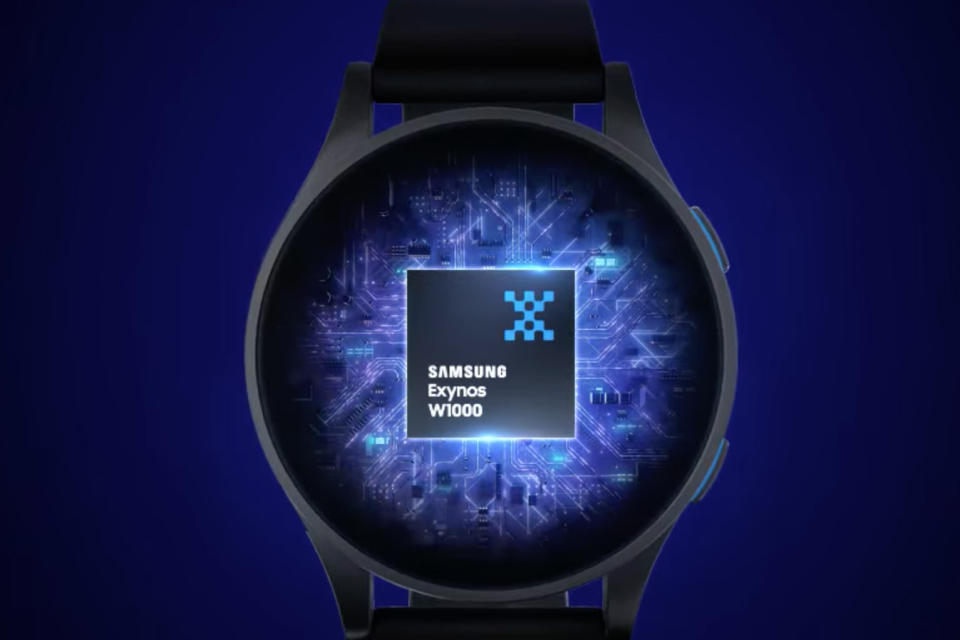
One of the most significant upgrades in the Galaxy Watch 7 will be less obvious until you experience it, as the new wearable packs in a considerably beefier CPU.
While Samsung still doesn’t seem to be in any hurry to embrace Qualcomm’s Snapdragon platform, the good news is that it’s putting in a significantly better in-house chip. The new Exynos W1000 is a five-core CPU built with a leading-edge 3 nanometer (3nm) process, and it promises 300% faster performance and 30% more power efficiency over the dual-core Exynos W930 used in the Galaxy Watch 6.
On top of that, Samsung is raising the bar with a dual-frequency L1/L5 GPS. That’s a feature typically confined to higher-end adventure smartwatches, so it’s nice to see it coming to Samsung’s standard Galaxy Watch 7.
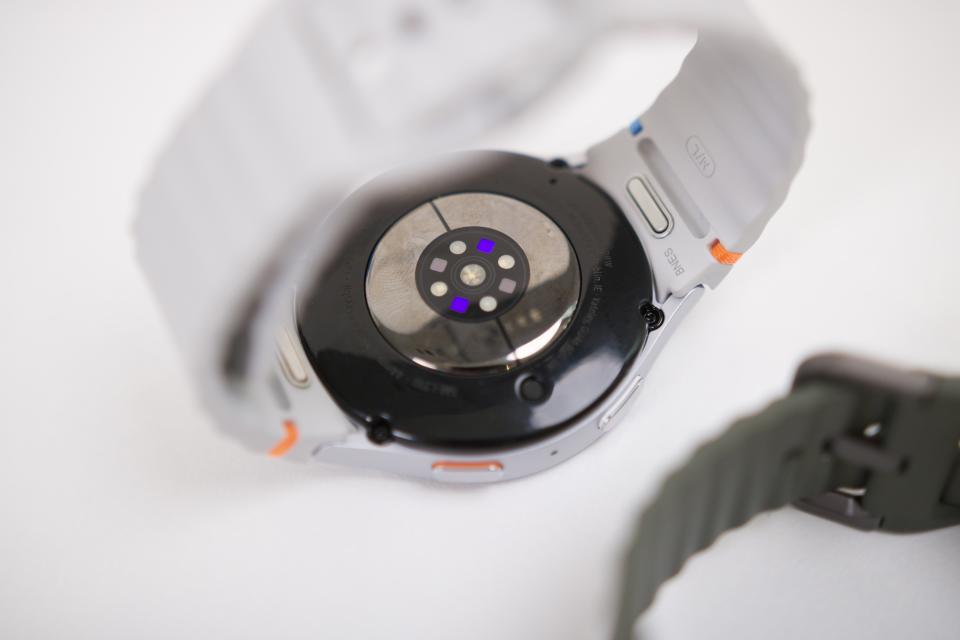
Battery life is an open question here. We’ll have to wait until we’ve put the Galaxy Watch 7 through its paces to see how it holds up, but the two models have the same 425mAh and 300mAh specs as last year, and the efficiency improvements of the new Exynos W1000 are promising. The Galaxy Watch 6 gave us two full days, including sleep tracking, so we expect the Galaxy Watch 7 to at least match that, although there’s a good chance it will exceed those numbers, especially combined with the software improvements in Wear OS 5.
Despite rumors that the Galaxy Watch 7 might get faster 15-watt charging, it still uses the same WPC standard as prior generations, promising “Fast Charging” that’s likely still limited to 10W speeds. That’s not to say that the wearable charges slowly by any stretch — you can get up to 45% in 30 minutes and a full charge in a little over an hour — but the laws of physics may be at play here. Even OnePlus, which has long been considered the king of insanely fast-charging smartphones, caps its smartwatch at 7.5 watts.
Samsung Galaxy Watch 7: software and updates
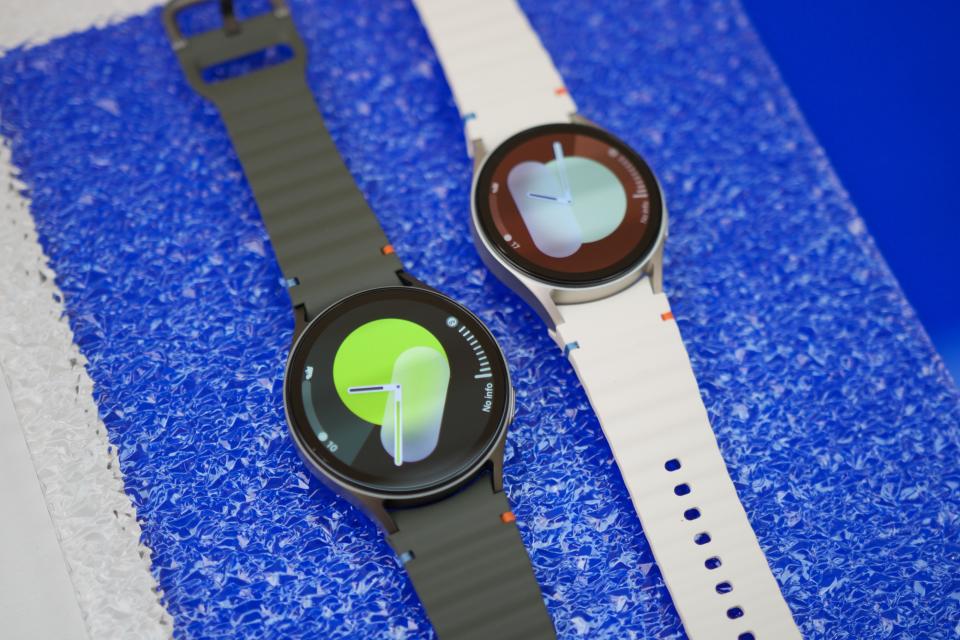
The Galaxy Watch 7 ships with Samsung’s own flavor of Wear OS 5, with One UI 6 Watch layered on top. With that, Samsung is bringing Galaxy AI features to its wearables for the first time, which will help improve metrics for features like sleep tracking and deliver new insights into your health and fitness.
For example, the Energy Score feature mentioned above will allow you to see at a glance how your health is impacting your daily life while offering coaching to help you make lifestyle improvements. Wellness Tips will expand that into providing broader suggestions for enhancing your well-being by using data recorded by Samsung Health and your personal interests.
The only catch is that most of these Galaxy AI features will require your Galaxy Watch 7 to be paired with a Samsung phone that supports Galaxy AI. The Exynos W1000 may be a powerful new chip, but it’s far from AI-capable, so your smartphone will need to handle the heavy lifting.
As for software updates, the Galaxy Watch 7 should be good for the next five years, as Samsung is promising four major Wear OS and One UI updates. As the first Wear OS 5 smartwatch to hit the market, it’s already ahead of the curve, which means it will someday be able to run Wear OS 9 and won’t be left behind until Wear OS 10 is released in 2029.
